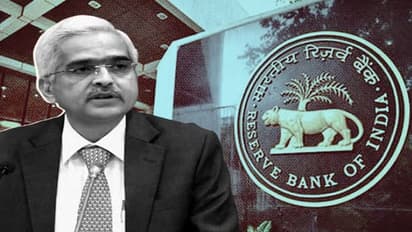RTGS money transfer facility is now available 24x7
The Reserve Bank of India had announced that the Real-Time Gross Settlement System or RTGS facility will now be available for round the clock transactions, with effect from 12:30 am on December 14.

With this India will become one of the few countries in the world to operate RTGS system round the clock throughout the year.
This comes within a year of operationalising NEFT 24x7 by the Reserve Bank.
According to the RBI, RTGS -- which began its operations on March 26, 2004 with a soft launch involving four banks -- presently handles 6.35 lakh transactions daily for a value of Rs 4.17 lakh crore across 237 participant banks.
With this India will become one of the few countries in the world to operate RTGS system round the clock throughout the year.
This comes within a year of operationalising NEFT 24x7 by the Reserve Bank.
According to the RBI, RTGS -- which began its operations on March 26, 2004 with a soft launch involving four banks -- presently handles 6.35 lakh transactions daily for a value of Rs 4.17 lakh crore across 237 participant banks.
The average ticket size for RTGS in November 2020 was Rs 57.96 lakh making it a truly large value payment system.
An RBI statement said, 'RTGS uses ISO 20022 format which is the best-in-class messaging standard for financial transactions. The feature of positive confirmation for credit to beneficiary accounts is also available in RTGS.'
'Round the clock availability of RTGS will provide extended flexibility to businesses for effecting payments and will enable introduction of additional settlement cycles in ancillary payment systems. This can also be leveraged to enhance operations of Indian financial markets and cross-border payments.'
The average ticket size for RTGS in November 2020 was Rs 57.96 lakh making it a truly large value payment system.
An RBI statement said, 'RTGS uses ISO 20022 format which is the best-in-class messaging standard for financial transactions. The feature of positive confirmation for credit to beneficiary accounts is also available in RTGS.'
'Round the clock availability of RTGS will provide extended flexibility to businesses for effecting payments and will enable introduction of additional settlement cycles in ancillary payment systems. This can also be leveraged to enhance operations of Indian financial markets and cross-border payments.'
What you should know about RTGS
* The RTGS system is primarily meant for large value transactions. The minimum amount to be remitted through RTGS is Rs 2 lakh with no maximum ceiling.
* With effect from July 01, 2019, RBI waived the processing charges levied by it for RTGS transactions. Banks may pass on the benefit to its customers.
* For a funds transfer to go through RTGS, both the sending bank branch and the receiving bank branch need to be RTGS enabled.
* The remitting customer has to furnish the following information to a bank for initiating a RTGS remittance.
- Amount to be remitted.
- Account number to be debited
- Name of the beneficiary bank and branch
- IFSC number of the receiving branch
- Name of the beneficiary customer
- Account number of beneficiary customer
- Sender to receiver information, if any
What you should know about RTGS
* The RTGS system is primarily meant for large value transactions. The minimum amount to be remitted through RTGS is Rs 2 lakh with no maximum ceiling.
* With effect from July 01, 2019, RBI waived the processing charges levied by it for RTGS transactions. Banks may pass on the benefit to its customers.
* For a funds transfer to go through RTGS, both the sending bank branch and the receiving bank branch need to be RTGS enabled.
* The remitting customer has to furnish the following information to a bank for initiating a RTGS remittance.
- Amount to be remitted.
- Account number to be debited
- Name of the beneficiary bank and branch
- IFSC number of the receiving branch
- Name of the beneficiary customer
- Account number of beneficiary customer
- Sender to receiver information, if any